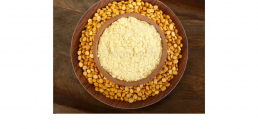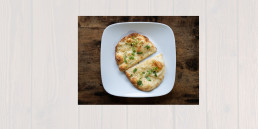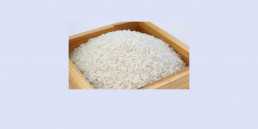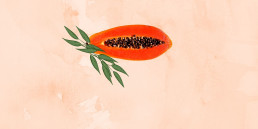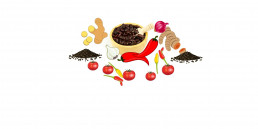Hello, my dear food lovers!
Masala Dabba, Mom and Me!
”Oh Lord! Look what you have done! Such a clumsy girl.” I hear my mother from the other side of the kitchen as I accidentally spill some dry mango powder in the ‘Katori’ for turmeric.
But the funny part is that when she cooked her famous ‘Chola’ or ‘chickpeas curry,’ Mama repeated my mistake with coriander and red chili powder.
And all I did was burst into an uncontrollable bout of laughter and exclaimed, “Karma strikes back!” My mother’s angry expression couldn’t douse this bout of cackling. This is the beauty of the Great Indian Spice Box. It creates not only lip-smacking dishes but also great memories.
In the last six months, Tequila Bubbles has shared several interesting facts about some of your favorite fruits, vegetables, beverages, or mouth-watering dishes that aren’t of Indian origin. But have become a staple in our diets.
However, I would like to speak quintessentially Indian in Today’s post. And it’s found in every functional kitchen of the Indian household.
So, let’s dive deep into the treasure trove of Indian cooking- the authentic ‘Masala Dabba.’
The spice box is a vital kitchen ‘asset’ transferred from one generation to another about a century ago.
You would have heard the elderly ladies of the house speaking nostalgically about the Masala Dabba that their mother had gifted. It is like an heirloom- to be used forever till the end of time.
Imagine this scenario demonstrating the Masala Dani’s importance in India.
A Grandmother’s affinity for the Masala Dabba
“With a deep sigh and dreamy eyes, your Dadi (paternal grandmother) narrated the story of the “Masala Dani.” She said, “Beta (Hindi for child), You know this brass box you see in the kitchen has my initials engraved below my mother’s and grandmother’s. During those days, a masala Dabba was an essential part of the girl’s trousseau with the bride-to-be’s name engraved on the box. This brass box is the magic behind every dish in an Indian kitchen.”
You listen to it with fascination. But you disagree and say, “But, Dadi, I don’t want a brass box.”
Looking at you, she shakes her head in disappointment and says, “Ok, if you don’t like this, use a stainless-steel Masala Dabba. But the satisfaction one gets from using spices from the former is unmatched.” And then continuing with her monologue, she sighed and said, “‘Today’s generation has no idea of the relevance and importance of the Spice Box. They think those pink, blue, yellow color jars look fancy. You will never know that Indian cuisine is incomplete if the Masala Dabba leaves the kitchen. That is the crux of Indian cooking. You will receive one when you get married!”
If you have such a story, message me in the comment section- thanks.
Imagine the Beautiful Spice Box
Coming back to the post. Ideally, the Seasoning box is round. And are found in brass, copper, wood, or steel materials. The box is eight to ten inches in diameter.
It ideally contains seven small bowls or ‘Katori’s.’ Each is filled with different condiments. Every spice is an integral part of Indian food. These bowls have a height generally smaller than the box to ensure that they fit perfectly in a flower-like arrangement.
A covering plate of the same material above the Katori’s ensures that the spices don’t lose their aroma. A small spoon lies carelessly on this covering.
After which, the lid shuts the traditional Indian Spice Box tightly. Thus, securing everything that is within it. It almost seems like the guards guarding the palace vault that contains priceless jewelry.
The demarcated area for the antique Masala Dabba is next to the gas stove. And thus, in all its royalty, the spice box occupies the most crucial position in the kitchen.
Coming to the primary residents of the homely ‘Masala Dani.’
So, let’s begin with the ‘Anjarai Petti ‘or the South Indian box:
Which traditionally contains five compartments. But over time has grown to seven. It contains Mustard seeds, Cumin seeds, Fenugreek Seeds, Peppercorns, Dry Red Chili, Urad Dal, and Chana Dal. The last two are lentils used for tempering.
The ‘North Indian’ or general spice box (pardon me, as I didn’t know a better way to distinguish the two) contains the following:
- Cumin Seeds – most commonly used for tempering.
- Mustard Seeds- also used for tempering.
- Turmeric Powder- is a superfood that imparts color and flavor to vegetables.
- Red Chili Powder-for the spiciness of the food.
- Coriander Powder – for flavor and thickening of gravies
- Dry Mango or Amchur Powder provides the required tanginess to the dry or gravy vegetable.
- Salt
So, as you can see, the list of spices is fundamental for churning out the most straightforward or complex of dishes because they include everything from tempering to seasoning to taste.
Apart from this, often there is Masala Dabba for whole spices or ‘Khada Masala” like:
- Gol Mirch- Black Peppercorns
- Elaiche- Green and Black Cardamon
- Dal Chini- Cinnamon Sticks
- Laung- Cloves
- Tej Pata-Bay Leaves
- Hing – Asafoetida
- Homemade Garam Masala
- Dry red chilies
- Kashmiri Red Chili Powder.
These spices are for preparing richer and tangier gravies.
Asafetida is a common ingredient, especially for the preparation of lentils. And is stored in a separate container. But it finds its place next to the kitchen masala container.
There are numerous variations to Indian cooking. Any alterations of the box’s ingredients per individual or regional preferences are found throughout the country.
And in India, people swear by The Indian Spice Box.
Before I sign off
Being a food lover myself, I love trying different cuisines. But, of course, not only from my native place, Rajasthan but the country as a whole.
But I can vouch for one thing: No food is complete without the aroma-filled joys of nature found in the Anjarai Petti or Masala Dabba.
P.S. will delve deeper into each of the spices in the subsequent posts. So, stay tuned!!!
Bbye and take good care of yourselves.

